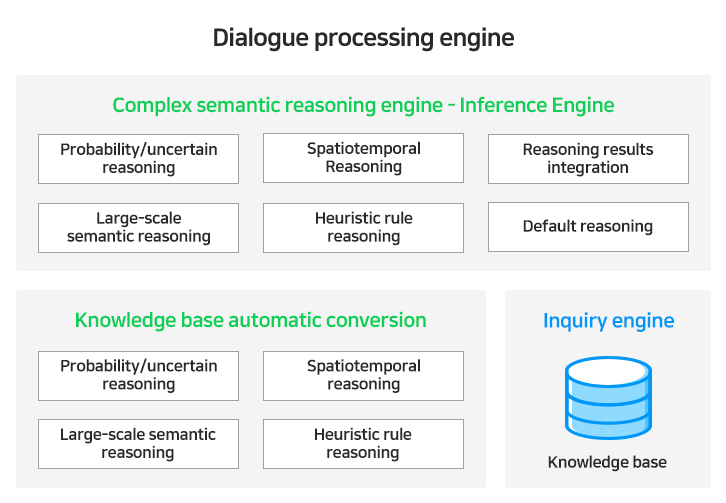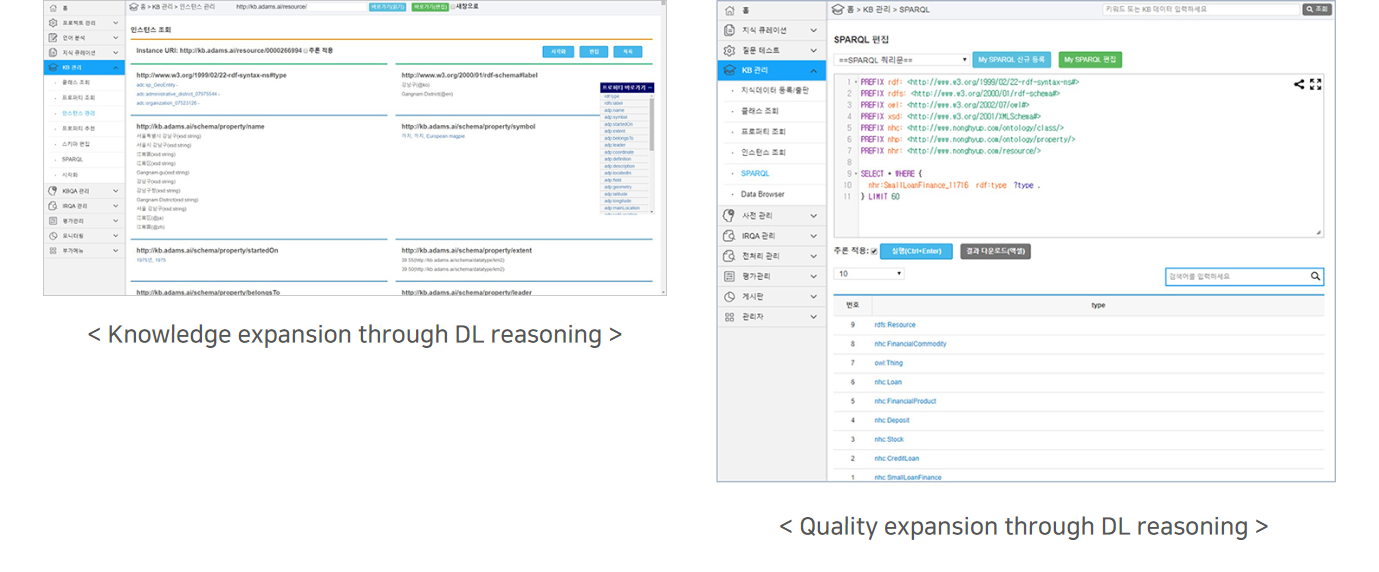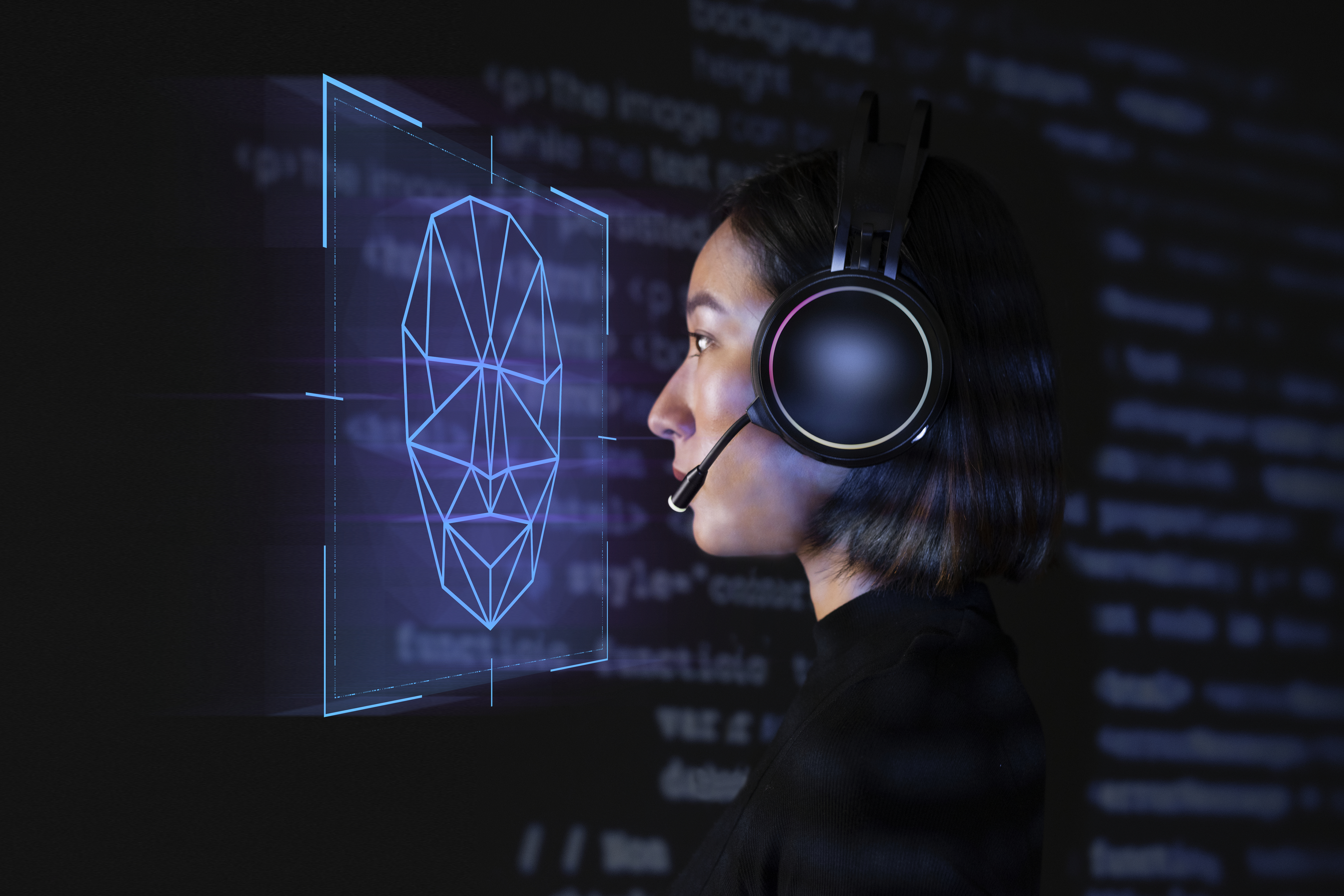Complex Reasoning Engine
Saltlux’s AI Suite complex reasoning engine accumulates knowledge extracted from structured and unstructured documents in the form of knowledge graphs, then generates knowledge by searching and inferring new facts based on given knowledge or relationships between different sets of rules. Especially, it can derive new relationships from existing knowledge and use them as new knowledge by combining logic rule-based deductive reasoning and machine learning-based inductive reasoning provided by AI Suite’s complex reasoning engine.
Main Features
- Ultra-capacity knowledge reasoning
Depending on the size of the knowledge employed and the complexity of the relationship between sets of knowledge, the amount of computation required can increase exponentially. Saltlux’s complex reasoning engine is capable of deriving new knowledge in large quantities, even in an extensive knowledge graph of more than 10 billion triples.
- Ultra-speed knowledge reasoning
The complex reasoning engine that supports in-memory distributed reasoning was based on Apache Spark, in which reasoning speed is about eight times faster than in conventional reasoning techniques. By providing not only batch method inference with the built-in knowledge, but also dynamic incremental indexing according to original data change and automatic real-time instantiation of the knowledge graph, real-time processing of newly entered knowledge is made possible.
- Various methods of complex reasoning
The complex reasoning engine supports complex multi-perspective reasoning. It supports both semantic web standards, such as RDFS and OWL-DL-level logical reasoning, and user-defined rule-based reasoning (Prolog, SWRL, F-Logic). In addition, the system structure is flexible enough to optionally load a necessary knowledge base storage engine.
Main features and specifications
The complex reasoning engine provides various reasoning functions such as large-scale semantic reasoning, empirical rule-based reasoning, and spatiotemporal reasoning. Our capabilities keep expanding through relevant research such as confidence value-based probability/uncertainty inference and default inference. In addition, it integrates the knowledge base engine and applies the real-time distributed processing environment, making it possible to obtain the results inferred from ultra-large amounts of data at high speed.

< Complex reasoning engine block diagram >
- Large-scale semantic reasoning
The complex reasoning engine supports RDF, RDFS, OWL, and OWL2 as a knowledge expression language that describes the knowledge data to be reasoned. Therefore, the results we provide are within the range of Description Logic supported by each knowledge expression language. DL-based reasoning mainly infers knowledge subsumption, equivalence, consistency, satisfiability, querying, etc., to generate new relationship information.
- Heuristic rule-based reasoning
The complex reasoning engine supports heuristic rule-based reasoning. Rule-based reasoning can infer new relationship knowledge by expressing and defining conditional constraints on relationships or attributes between classes. Typical rule-based inferences include F-logic and SWRL reasoning.
- Spatial Reasoning
The complex reasoning engine provides a spatial knowledge reasoning function in which relational information between spatial information objects, including positional coordinates, are extracted to expand. Positional coordinates of objects with spatial information are compared to extract the topological and directional relations between the objects. In addition, spatial relations are inferred between the objects based on the extracted topological information to generate knowledge.
Main engine screen





